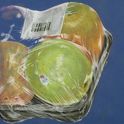Why in the world are so many people having such problems with this recipe?? Has the recipe been updated to make less hassle; I'd greatly appreci...
...ate a clearer, less problematical recipe as the bread looks fantastic! Thanks, Ann Sanderso

Recipe question for:
Kindred's Milk Bread
9 Comments
WendallApril 7, 2017
Well, as a British expat living in Asia, I wasn't aware that kosher salt can be so different and the author made no mention of this. I used Morton's, the only one available here, and it is twice as salty as Diamond. The bread didn't rise very well, and tasted pretty awful. The cooking times are wrong - and I got an American friend to try it too and she backs me up - and the bread was ready in just over half the time. As imported flour is very expensive... as is imported cream (no real dairy industry here) this was an expensive and sorry disaster. I am going to try again using half the salt quantity and reduce the timings. I think the author should have been more specific as I'm assuming that she is familiar with the fact there is more than one kind of kosher salt.
TessApril 4, 2017
I've made this bread twice already. After adding the dry ingredients in batches, the dough came together nicely and became smoother after adding the pats of butter. Both times, the dough was neither wet nor dry and my mixer wasn't over-strained. I didn't need to adjust the amount of flour or liquid. That being said, depending on the weather condition of the day you bake the bread, the amount of flour may need to be adjusted.
Bunnee B.January 27, 2016
I made this and had no problem with the recipe - a little different from the bread I usually make, but it rose significantly and looked the way it was supposed to. I was not too impressed with the bread itself, however, and wondered at the rave reviews it got. I wouldn't make it again.
amysarahJanuary 21, 2016
haven't made this recipe, but it's very, very similar to Hokkaido milk bread: https://food52.com/recipes... Both start with a cooked roux-like base, have butter kneaded into the dough and so on. You might want to give it a go - I found its instructions quite clear and had good luck with it several times. It's baked in one loaf, but pulls apart into 3-4 smaller individual loaves. Actually, fairly easy - this pic was my 1st attempt (I now usually do 4 rolls of dough per pan):
SmaugJanuary 20, 2016
Some of the steps are a bit unorthodox, and there are quite a few of them, but the recipe seems quite clear on most things. The comments seem to bring up two problems people have- 1)the method of adding the yeast- the recipe calls for active dry yeast but, by the author's notes in comments, evidently rapid rise yeast, which can be added directly to the flour, seems to have been intended. And a couple of people thought the dough was too wet- one of them sifted the flour, which caused her problem. I suppose I have to make the recipe now- it didn't look like particularly a lot of liquid 9there is 1c. water that's not on the ingredient list), but a lot of bread doughs are intentionally wetter than the standard sandwich bread or dinner rolls most people learn on.
ktrJanuary 20, 2016
I'm trying to remember exactly what the dough was like when I made it, but I do not remember it being overly wet. I wonder if the reason people are running into that issue is that they are not cooking the flour/water mix down far enough.
SmaugJanuary 20, 2016
The dough came together easily enough- it's a bit on the sticky side, nothing extraordinary. You might want to let the mixture cool a bit before adding the egg and yeast. Won't know how the rolls come out until tonight.
ktrJanuary 20, 2016
I don't make bread very often (other than recipes from artisan bread in 5 minutes a day) and this recipe turned out great for me.
SmaugJanuary 21, 2016
In conclusion; I don't think you should have too much trouble. The initial step, where you make a pot of library paste, is a bit odd but not difficult and doesn't seem to require precision. It's probably best to use the instant yeast ( I used regular, which required a bit of shifting of things to get it dissolved)- mixing it with the flour should remove most danger of overheating, but I'd let the warm ingredients cool a bit- they do start the dough off warm, speeding the rising (1 hr. isn't much for a first rise). It may be too much dough for your mixer- you can do half, do it in batches, or knead by hand. If you do it by hand be careful not to add too much flour- it should be a little sticky. I baked them in English muffin rings (do people really have giant muffin tins?)- half the recipe made 5 huge rolls. As far as appearance, aroma and texture they are first rate. The recipe is designed to play sweetness against salt; this combination doesn't really appeal to me much, but the balance seems good (too much of both for me) but I think most people will like it, and it's trendy.
Showing 9 out of 9 Comments
Recommended by Food52
Popular on Food52
Continue After Advertisement


